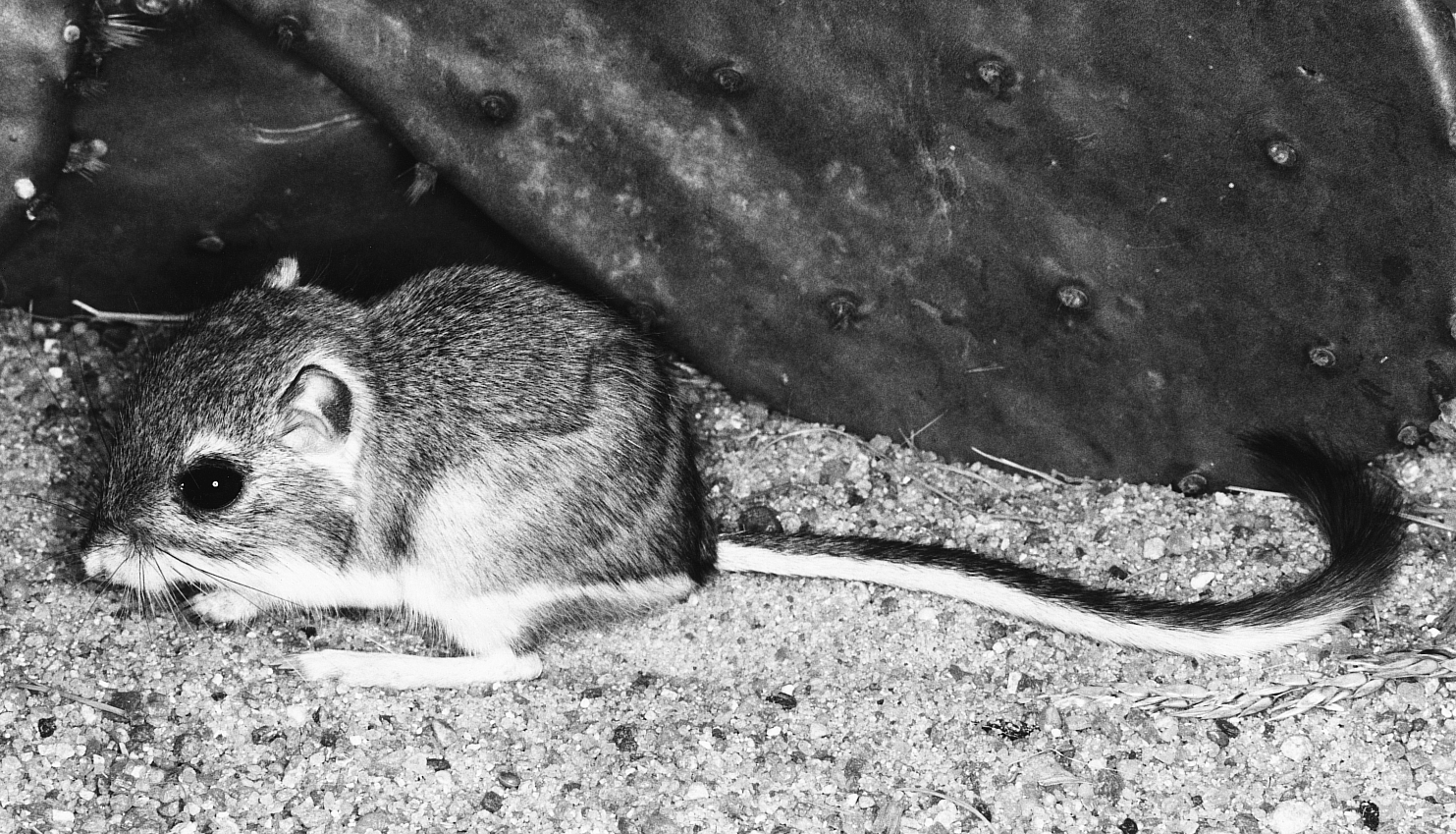GULF COAST KANGAROO RAT
Dipodomys compactus True 1889
Order Rodentia : Family Heteromyidae
DESCRIPTION. A five-toed, medium-sized kangaroo rat; tail relatively short; pelage short and coarse; upperparts range in coloration from grayish to light ochraceous buff intermixed with black; cheeks white, and soles of feet and dorsal and ventral tail stripes brownish. Similar in appearance to D. ordii but with shorter tail, shorter and coarser pelage, and less brownish in coloration. Dipodomys compactus is smaller than D. ordii cranially, particularly in length of skull and size of mastoid bullae. Dental formula: I 1/1, C 0/0, Pm 1/1, M 3/3 × 2 = 20. Averages for external measurements: total length, 223 mm; tail, 118 mm; hind foot, 36 mm. Weight, 44–60 g.

DISTRIBUTION. Known from most of South Texas north to Bexar and Gonzales counties; also known from Mustang and Padre Islands.

SUBSPECIES. Dipodomys c. compactus on the barrier islands and D. c. sennetti on the mainland.
HABITS. The Gulf Coast kangaroo rat inhabits sandy, sparsely vegetated soils. On Padre Island they dwell among the shifting dunes of the barrier reef and in South Texas are often found on disturbed or overgrazed areas characterized by sparse, open vegetation and deep, loose sand.
Their food consists of the seeds of grasses, annuals, and shrubs. Specific food habits are not well known.
Reproductive habits are not well known. A pregnant female containing two embryos was captured on 23 August, and another female taken on 6 July displayed two placental scars.
POPULATION STATUS. Common. The Gulf Coast kangaroo rat is common on the mainland and barrier islands of South Texas.
CONSERVATION STATUS. The IUCN lists the Gulf Coast kangaroo rat as a species of least concern, and it does not appear on the federal or state lists of concerned species. Continued development on Mustang and Padre Islands could threaten its existence in the future. The status of these populations should be carefully monitored.
From The Mammals of Texas, Seventh Edition by David J. Schmidly and Robert D. Bradley, copyright © 1994, 2004, 2016. Courtesy of the University of Texas Press.
Natural Science Research Laboratory
-
Address
Museum of Texas Tech University, 3301 4th street, Lubbock, TX 79409 -
Phone
806.742.2486 -
Email
nsrl.museum@ttu.edu

